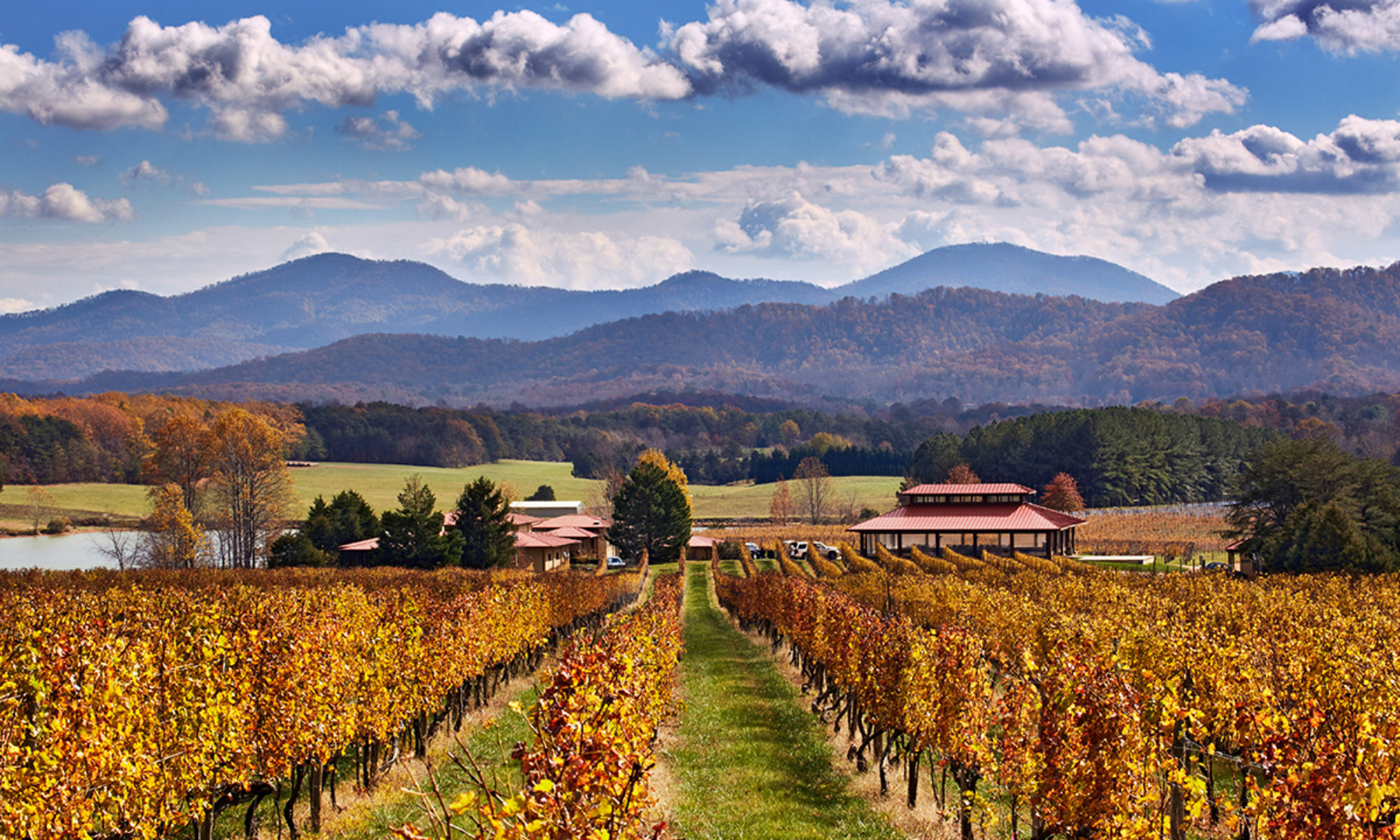Naked Mountain Winery & Vineyards
Naked Mountain Winery and Vineyards is located on Leeds Manor Road, along with a number of other wineries, in the town of Markham in western Fauquier County. Naked Mountain is one of Virginia’s oldest wineries, with grapes having been planted all the way back in 1976 by original owners Bob and Phoebe Harper. New owners Randy and Megan Morgan, native Virginians, purchased the winery and 42-acre property in 2010. While one might hope the name of the winery derives from some interesting activities, it actually derives from the Naked Mountain on which the vineyard is located.
Wine. Tier II. Naked Mountain is a substantial producer, at 6,000 cases a year. In its first decades it was one of the most heavily-awarded and highly regarded wineries in the state, notably for their Chardonnay. Competition caught up with Naked Mountain over the years, and the wines are more infrequently entered in competitions. Two 2019 vintage Naked Mountain wines, the “Raptor Red” and Chardonnay, received silver medals at both the 2022 Virginia Governor’s Cup state-wide competition and the 2022 Atlantic Seaboard Winery Association competition. At the 2021 Governor’s Cup, the winery received silver medals for their Chardonnay and Cabernet Franc, and a bronze medal for their Petit Verdot. A few of the wine names pick up on the Naked Mountain theme, including their Birthday Suit, Skinny Dipper, and Make Me Blush.
Setting. One star. Naked is tucked away in the woods, with a Chalet-style tasting room that includes a fireplace for cold weather wine-tasting, and a deck with great views on the vineyard, mountains and valleys. Leeds Manor road itself is beautiful coming into the winery, albeit very windy and narrow. Plenty of indoor and outdoor seating. Bread and cheese available.
Stories. Leeds Manor. Thomas, Lord Fairfax and Baron of Cameron, was born in 1693 at the famous Castle of Leeds, in southeast England. Though the present castle dates mainly to a rebuilding of the 19th century, there has been a castle on the site for over 1,000 years, and the present building captures well the spirit of the Norman castle built in 1119. Leeds Castle was a favorite residence of King Edward I, and of Henry VIII’s first wife, Catherine of Aragon. Fairfax came to the colonies to oversee the vast “Northern Neck Estate” granted by King Charles II, which encompassed most of what is today northern Virginia. Fairfax sold off much of the giant Northern Neck land grant, but a few “Manors” were created over which Lord Fairfax, as “Lord of the Manor”, retained rights. One of the first of these was the “Manor of Leeds”, named for the castle which was the seat of the Fairfax family. Lord Fairfax came to Virginia in 1736 and laid out the Manor of Leeds. The Manor contained over 100,000 acres between Hedgeman River, on the branches of Goose Creek, on the lower side of the Shenandoah River below Happy Creek, including the Blue Ridge between Happy Creek Gap (now Chester Gap) and Ashby’s Gap. The story goes that he felt that the country was too civilized and as the foxes were getting scarce, and so he built a new home, “Greenway Court”, across the mountains in what is now Clarke County, where buffalo, elk, deer, bear, and foxes abounded. The irony is that today the best fox-hunting country in Virginia is on and to the east of the Manor of Leeds. About 1793 John Marshall, later Chief Justice, his brother and two others formed a syndicate to purchase from the Fairfax heirs the Manor of Leeds and certain other lands. The speculation was almost disastrous, and Marshall was forced to accept an appointment in 1797 as one of the envoys from the United States to France for the $20,000 he received. When the syndicate divided the property, John Marshall kept the Manor of Leeds. Today John Marshall’s Leeds Manor Rural Historic District is a national historic district, characterized by large expanses of open agricultural land, historic roadways, and rolling foothill terrain. And a great many wineries – something John Marshall had not thought about.
